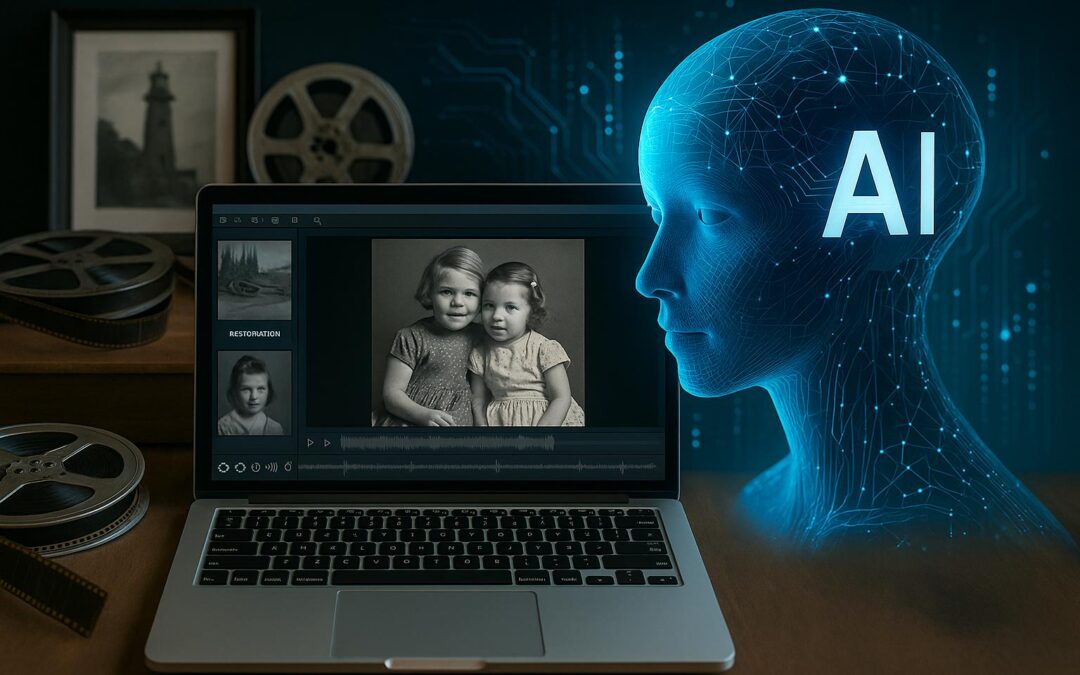The way we remember, document, and safeguard history has always been tied to the technologies of the time. From clay tablets to film reels and magnetic tapes, each era has left behind unique cultural artifacts. However, these materials are fragile, and the challenge of preserving them for future generations has only grown with time. Enter the age of artificial intelligence (AI), machine learning, and advanced restoration software, tools that are transforming media preservation into a more precise, efficient, and even predictive discipline.
In this article, we’ll explore how these emerging technologies are revolutionizing the restoration of films, photographs, and audio archives, and what the future holds for cultural preservation.
The Shift Toward AI in Media Restoration
Artificial intelligence is rapidly becoming the cornerstone of modern media preservation. Unlike manual restoration, which often required painstaking frame-by-frame adjustments or hours of audio cleanup, AI-powered tools can process massive amounts of data in seconds.
For example, AI algorithms trained on large datasets of images can automatically identify scratches, fading, or distortions in photographs and film reels. These tools not only correct imperfections but also reconstruct missing details with remarkable accuracy. What once took restoration experts months can now be accomplished in a fraction of the time, without sacrificing quality.
In audio preservation, AI-driven noise reduction filters can isolate voices from background static or hum, breathing new life into old recordings that were once thought unusable. These advancements make it possible to preserve family memories, historical broadcasts, and cultural recordings with unprecedented clarity.
Machine Learning and the Rise of Predictive Restoration
Machine learning takes media preservation one step further by enabling predictive restoration. Instead of simply correcting visible flaws, predictive models anticipate where damage is likely to occur in aging materials.
For instance, film reels degrade in predictable ways depending on storage conditions. Machine learning models can analyze environmental data, such as humidity, temperature, and chemical composition; to forecast deterioration before it happens. This allows archivists and media professionals to intervene early, ensuring that fragile materials are digitized or stabilized before they become irreparably damaged.
Predictive AI also offers new possibilities for “filling in the blanks.” If parts of a photograph or audio recording are missing, machine learning models can reconstruct lost segments by studying patterns in the remaining data. While this raises ethical questions about authenticity, it also provides an opportunity to recover priceless elements of cultural history that might otherwise remain incomplete.
Advanced Restoration Software in Action
Beyond AI and machine learning, advanced restoration software has grown increasingly sophisticated. Programs today combine automation with human expertise, giving archivists precise control over how artifacts are restored.
- Film: Color correction, frame stabilization, and grain management can be done with near-perfect accuracy, restoring classics to their original vibrancy.
- Photography: Tools can recover contrast, balance tones, and even reintroduce lost colors, turning faded prints into sharp digital replicas.
- Audio: Multitrack restoration tools can separate instruments, vocals, and background sounds, allowing engineers to remix or clarify original recordings without losing their authenticity.
For families, this means that old wedding videos, reel-to-reel tapes, or photo albums no longer have to remain in deteriorating condition. For institutions, it means preserving cultural history in a way that is both cost-effective and widely accessible.
The Future: Immersive and Interactive Preservation
Looking forward, media preservation is set to move beyond simple restoration into immersive experiences. Virtual and augmented reality tools are already being tested to bring preserved artifacts into interactive digital spaces. Imagine being able to walk through a 3D recreation of a historic film set or listen to an archival concert as though you were in the audience.
Another exciting frontier is generative AI, which has the potential to simulate entire environments around preserved artifacts. For example, rather than just restoring an old radio broadcast, AI could recreate the soundscape of the era, making the experience richer and more educational.
Blockchain technology also shows promise in the future of preservation, ensuring the authenticity of digitized media by providing unalterable proof of provenance. This will be especially important as AI-generated reconstructions blur the line between restoration and recreation.
Why This Matters
Preservation isn’t just about protecting artifacts; it’s about safeguarding our shared cultural memory. Old home videos, community archives, and rare broadcasts are more than just recordings; they are living connections to the past. Without intentional preservation, entire chapters of history, both personal and global, risk being lost.
The convergence of AI, machine learning, and immersive technologies ensures that future generations will not only inherit preserved content but also experience it in ways we could once only imagine. By blending authenticity with innovation, we’re entering a new golden age of memory preservation.
Conclusion: The Next Chapter in Legacy Preservation
Emerging technologies are rewriting the rules of media preservation. What once required painstaking manual effort can now be automated, accelerated, and even predicted with the help of AI. From restoring film and photographs to preserving entire soundscapes and environments, the tools of tomorrow will ensure that the cultural treasures of yesterday remain accessible for generations to come.
If you have films, tapes, photos, or recordings that deserve to be preserved, there’s never been a better time to act.
Contact Leave A Legacy to safeguard your memories with cutting-edge technology and ensure your legacy lives on.

